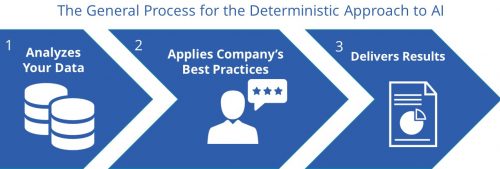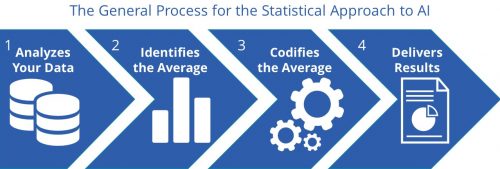Increase efficiencies and productivity by automating core reporting tasks for medical writing.
Automate core regulatory report documents across the CTD pyramid and dramatically accelerate submission timelines.
Increase efficiencies and productivity by automating core reporting tasks for medical writing.
Automate core regulatory report documents across the CTD pyramid and dramatically accelerate submission timelines.
Last week, VentureBeat hosted a summit in Berkeley called “Riding the AI Wave.” Talks focused around the multitude of ways that AI is transforming business, but according to VentureBeat’s staff writer, Khari Johnson, one common theme kept popping up: the human element of AI. Any technology using AI is tried and tested by a human, which means the technology is inherently human-like. This means that in order to make better AI, human and machine need to work together.
Focusing the conversation around the relationship of AI and humans, as opposed to fear, is one idea that we’ve talked about before. It used to be that AI was always portrayed as this apocalyptic technology, one that would result in robots taking over the human race. This binary relationship, all robots or all manual work, isn’t realistic.
For example, take these well-known past inventions: the printing press, the assembly line, the PC. Each of these inventions served as tools, helping businesses to effectively scale operations and employees to complete tasks more efficiently and accurately.
However, with each of these examples, the employee must be trained to adapt to the machine. This can be a challenging barrier if the technology has a complex language and the communication only happens one way. This is the problem that Yseop’s technology addresses: making this communication between humans and tools easier.
This is particularly the case for recent technological developments. Take computers for example. Since the dawn of computers, it’s been the responsibility of the user to communicate in a language that the computer understands. As many coders would tell you, if you write in the wrong language, use the wrong syntax, the computer can’t execute your instructions. The communication is broken.
At Yseop, we’ve built a technology that takes the computer language (data) and writes into human language. Accessing and understanding complex data doesn’t have to be reserved for those few data savvy experts. With Yseop’s Next-Generation Natural Language Generation (NLG) technology, written insights can be provided on demand in an easy to understand, non-robotic text.
Today, data experts can focus on the more complex, creative questions and business users can get access to data insights instantaneously. Programming no longer has to be a prerequisite to find and utilize data insights.
As discussed in the VentureBeat article, human input varies when it comes to AI. Some AI tech requires rules while others leave the it up to the AI to determine rules and relevant criteria. These two types are referred to as a deterministic versus statistical approach to AI.
For many, adopting a technology that automates 100% of a particular job with 0% input poses a risk, especially when talking about industries that are highly regulated (for example finance). Referred to as an AI black box, input goes in and results come out, with no way of understanding why particular conclusions were drawn.
Having this magical black box technology isn’t viable for most businesses. Many businesses need an audit trail to record why a particular conclusion was drawn. This is where the deterministic approach (compared to the statistic approach to AI) is the only feasible option.


For many companies, implementing a set of rules and best practices for the technology to follow is ideal. The result? Automating 80% of the repetitive, data-driven work with 100% accuracy. Employees can focus on the 20% of tasks that are unusual or require special handling, as opposed to being bogged down with repetitive tasks. Working together with AI, the workday can be filled with more interesting tasks.